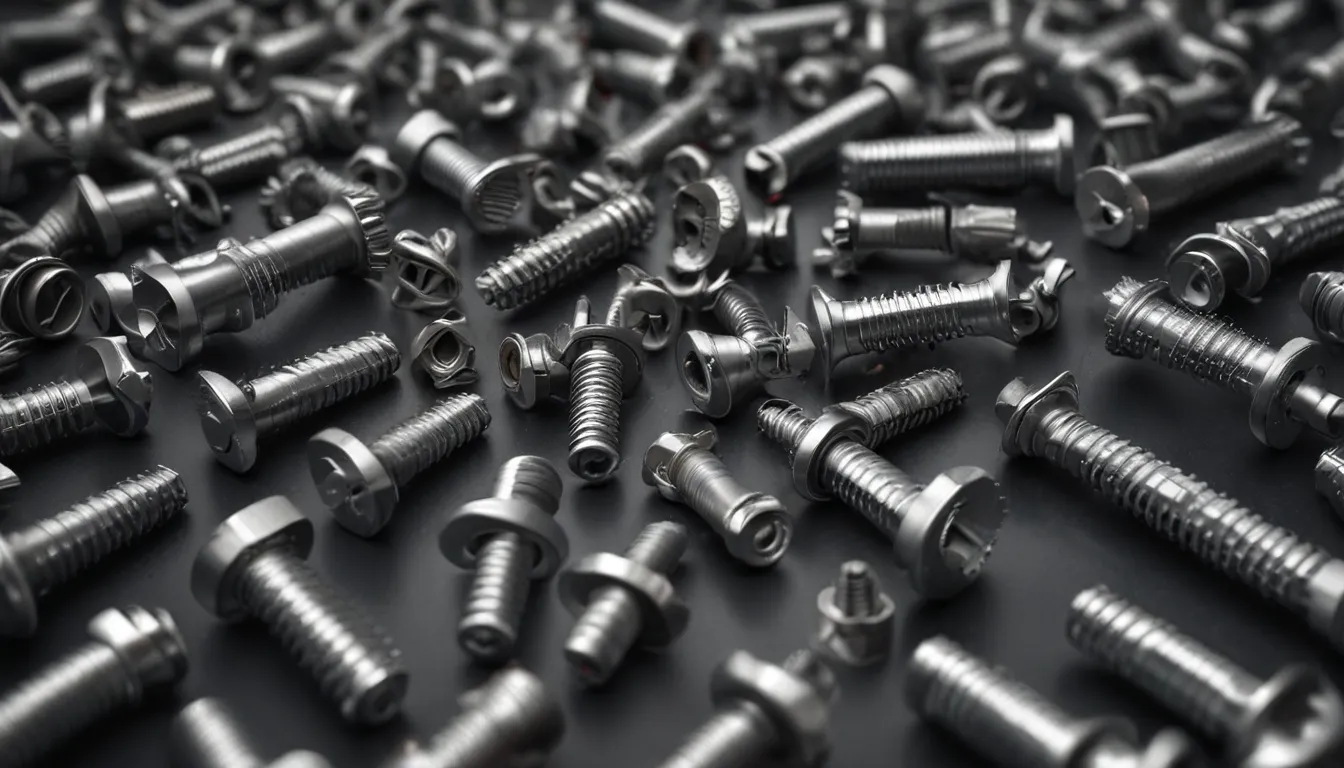A Note About Images: The images used in our articles are for illustration purposes only and may not exactly match the content. They are meant to engage readers, but the text should be relied upon for accurate information.
Screws, though often overlooked, are an essential part of our daily lives. They hold together our furniture, secure our electronics, and play a vital role in various industries. But beyond their utility, screws have a rich history and unique characteristics that make them truly remarkable. In this article, we will explore 18 fun and intriguing facts about screws, shedding light on their evolution, diverse types, and unexpected uses. Whether you are a DIY enthusiast, a history buff, or simply curious about the world around you, these facts will offer a fresh perspective on this seemingly ordinary yet extraordinary invention.
Key Takeaways:
- Screws are versatile fasteners with various head styles and materials, essential for construction, manufacturing, and DIY projects.
- From ancient origins to modern innovations, screws have evolved to meet diverse needs, shaping the built environment and powering mechanical systems with their enduring impact.
The Versatility of Screws:
Screws are more than just fasteners – they come in various sizes and designs to suit different applications. Whether you are assembling furniture, hanging a picture frame, or building a house, screws play a crucial role in bringing projects to life.
Archimedes and the Birth of the Screw:
The earliest version of the screw dates back to the 3rd century BC, credited to the renowned Greek mathematician Archimedes. He developed a simple screw for irrigation purposes, laying the foundation for the screws we use today.
Beyond Construction and Woodworking:
Screws are essential components in mechanical devices, engines, appliances, and electronic devices. Their ability to securely hold components together makes them indispensable across various industries.
Innovations in Screw Design:
The Phillips head screw was invented in the 1930s to address the limitations of slotted screws. John P. Thompson created the Phillips head screw with a cross-shaped design for increased torque and minimized slippage during installation.
Fascinating Records:
The Guinness World Record for the longest screw measures an astounding 156.84 meters. Manufactured in Germany for a tunnel-boring machine, this colossal screw showcases the incredible scale screws can reach.
Evolution of Head Styles:
Screws come in a wide range of head styles, including flat, oval, round, and hexagonal, each serving specific purposes and catering to different installation requirements and aesthetic preferences.
The Power of Threads:
The threads on a screw provide a secure grip when fastening materials together. These helical ridges create a strong bond with the material it’s driven into, ensuring stability and preventing loosening over time.
Factors Influencing Torque:
The torque required to drive a screw is influenced by its thread pitch and diameter. Understanding this relationship is crucial for achieving optimal fastening results with different types and sizes of screws.
Durability of Stainless Steel Screws:
Stainless steel screws are highly resistant to corrosion, making them ideal for outdoor and marine applications. Their durability ensures longevity in structures and equipment exposed to moisture and harsh weather conditions.
Time-Saving Self-Tapping Threads:
Screws with self-tapping threads eliminate the need for pre-drilling holes in certain materials, creating their own mating threads as they are driven into the material. This innovation simplifies installation processes and saves time.
Efficiency of Robertson Screws:
The Robertson screw, also known as the square-drive screw, offers enhanced torque and reduced slippage during installation. Its square-shaped socket provides a secure grip on screwdrivers, making it efficient and reliable in fastening applications.
Decorative Brass Screws:
Brass screws are prized for their decorative appeal and corrosion resistance, suitable for woodworking and decorative applications indoors and outdoors, especially in moisture-prone environments.
Security with Tamper-Resistant Screws:
Screws with tamper-resistant features address security concerns in various industries, designed to deter unauthorized access and vandalism, providing an added layer of security in critical applications.
Stability with Thread-Locking Adhesives:
Thread-locking adhesives applied to screw threads enhance their resistance to vibration and loosening, ensuring stability and reliability in applications where these factors are crucial.
Convenience of Magnetic Screws:
Magnetic screws offer convenience during installation by holding the screw securely on the screwdriver, simplifying alignment and driving tasks, especially in hard-to-reach areas.
Adaptability Across Materials:
Screws are compatible with a wide range of materials, including wood, metal, plastic, and composites, making them a go-to choice for fastening different materials in construction, manufacturing, and DIY projects.
Aesthetic Recessed-Head Screws:
Screws with recessed heads provide a sleek and flush finish in applications where aesthetics are a priority, offering a clean and polished appearance suitable for furniture assembly and interior design projects.
Ongoing Innovations:
The innovation in screw design continues to evolve, with advancements in materials, coatings, and performance characteristics that enhance durability, strength, and application versatility, ensuring screws remain fundamental in construction, manufacturing, and engineering.
Conclusion:
Screws may appear simple, but they play a vital role in construction, manufacturing, and various industries. Understanding the science and history behind screws can deepen our appreciation for these essential tools. Next time you pick up a screwdriver, take a moment to marvel at the intricate world of screws and their remarkable impact on our modern existence.
FAQs:
What are the different types of screw heads?
– Slotted, Phillips, Allen, Torx, and hex are common types of screw heads, each with unique features suitable for specific applications.
How are screws measured?
– Screws are typically measured by length and diameter, with length measured from the head to the tip and diameter across the widest part of the threads.
Was this page helpful?
Our commitment to delivering trustworthy and engaging content drives us to provide accurate and credible information contributed by real users, ensuring a wealth of diverse insights and information. Trust in our dedication to quality and authenticity as we explore and learn together.






